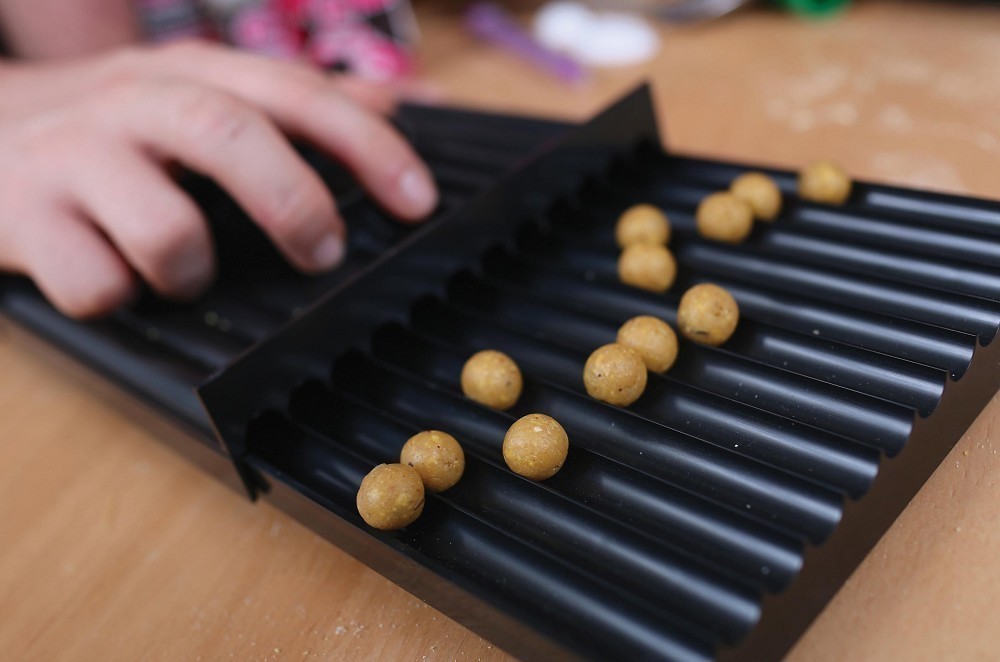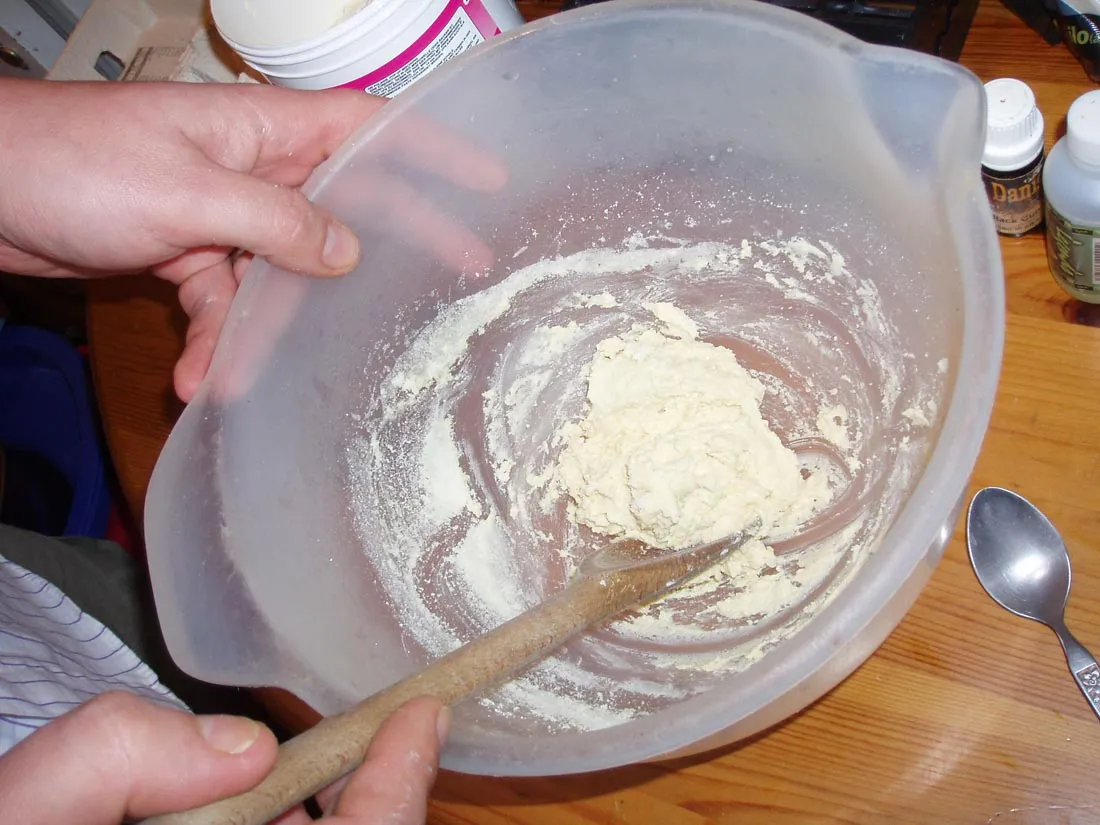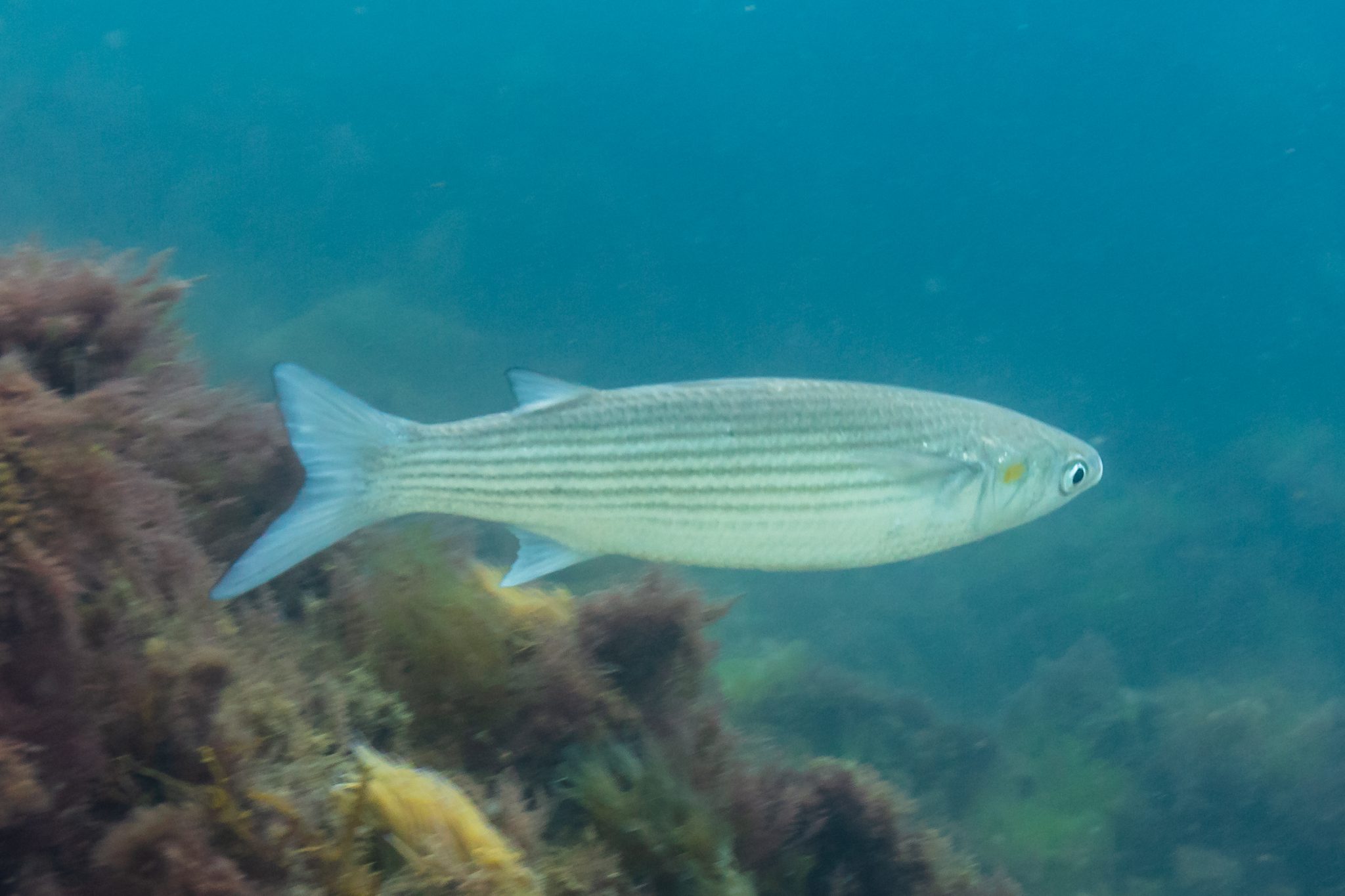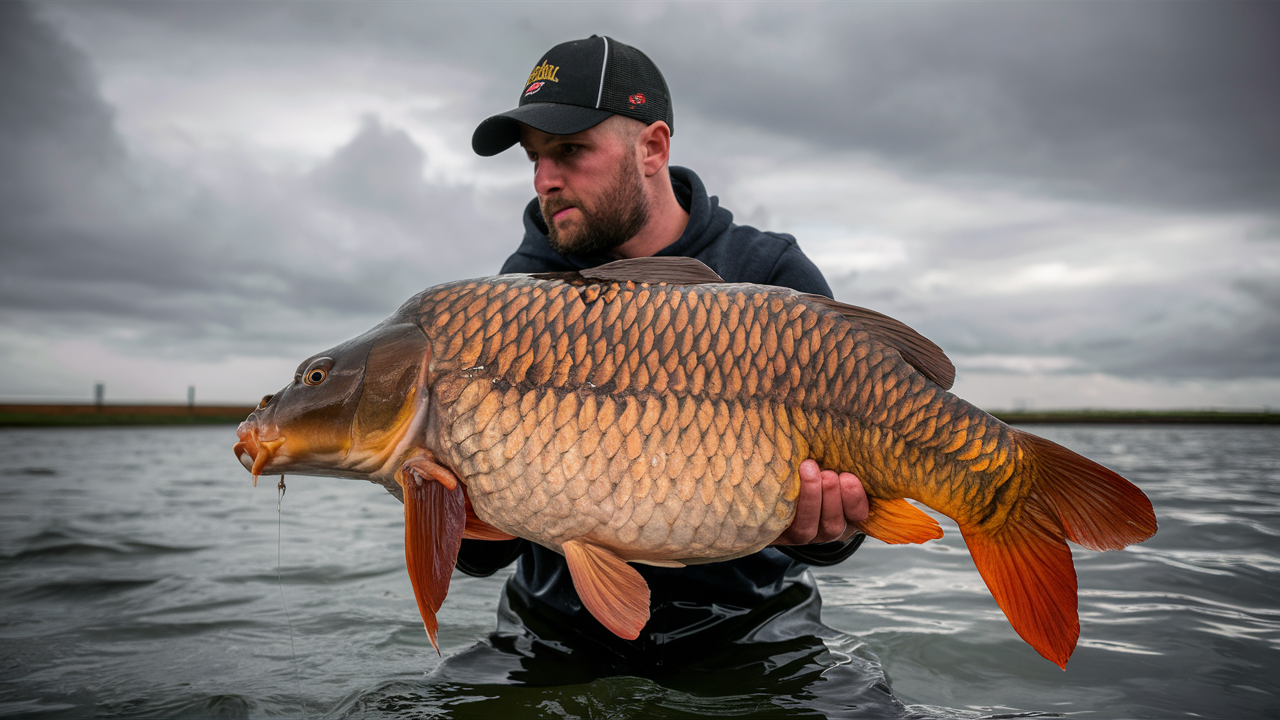
DIY boilies. How to make boilies yourself

7 min read
After three decades on the water targeting trophy carp, I’ve learned that store-bought baits often fall short when conditions get challenging. Homemade boilies offer superior customization, freshness, and cost-effectiveness that commercial options simply can’t match. More importantly, they allow you to develop signature baits that work specifically for your local waters.
Boilies are small, round fishing baits packed with nutrients, flavors, and colors designed to attract fish. They are especially popular among carp anglers, who often find that ready-made baits can be expensive or not tailored to their specific needs. Fortunately, making your own boilies at home is a feasible and rewarding option. With a variety of recipes and methods available, any dedicated angler can discover the process that works best for them.
DIY Carp Boilies
To create these bait balls, you’ll need to start with a dough-like base and then add various flavors and nutrients. Here’s a breakdown of the essential ingredients you’ll need:
Ingredients

-
Flour: Options like fish meal, meat and bone meal, or buckwheat flour are ideal for boilie production. You can also incorporate ground soybeans, peas, and other crops.
-
Groats: Grains such as corn, oats, semolina, and millet can enhance your mixture. Bread crumbs and crushed gingerbread are also common additives but are not essential.
-
Thickener: To ensure the mixture holds together, natural thickeners like gelatin, pectin, or starch should be included.
-
Dye: A vivid color can make your boilie more detectable in murky water or vegetation. You can use either natural dyes (like beet juice or carrot extract) or artificial ones. Some ingredients, like semolina and peas, naturally possess attractive colors.
-
Spices and Aromatics: Certain seasonings can increase the bait’s attractiveness. It’s helpful to research the seasonal preferences of carp, as some smells may attract them in one season but deter them in another. Common spices include vanilla, garlic, and cinnamon.
-
Liquid Flavors: A strong alternative to dry spices, these are commercially available and have distinctive aromas. Options can range from chocolate to various herbal scents.
-
Digestive Stimulants: For an added edge, consider including ingredients like flax cake that enhance fish appetite.
How to Make Boilies at Home
Creating boilies at home requires some kitchen tools and a bit of patience. Before you begin, gather a saucepan, scales, measuring cups, mixing utensils (whisk or mixer), a sieve, and a tray for the finished product. While a specialized gun can help form balls, a large syringe can also work well.
Steps to Create Your Own Boilies:
- In one bowl, mix together all the dry ingredients (flour, groats, spices).
- In a separate bowl, combine your liquid components.
- Gradually pour the liquid into the dry ingredients, stirring constantly until a dough forms. The dough should be elastic and not sticky. If it sticks to your hands, add more dry ingredients.
- Allow the mixed dough to rest for 1-2 hours in a warm environment, covered with a film.
- Roll the finished dough into sausage shapes about 1 cm in diameter, cutting these into smaller cubes from which you can form balls.
- For heat treatment, either microwave the raw boilies for light, porous balls (which disintegrate quickly in water) or boil them on the stove and then dry in the oven to create a longer-lasting bait.
- Store your finished boilies in the refrigerator. If you’ve made a large batch, consider freezing them for future fishing trips.
Popular Recipes for Carp Boilies
Different conditions call for unique bait recipes. Here are a few popular options using simple ingredients.
Semolina Boilies
Semolina is a versatile ingredient that appeals to a variety of fish species.
Recipe No. 1: Mix 400g of semolina with 400g of a soy-corn flour blend and a glass of powdered milk. Add 5 tablespoons of powdered sugar, cooking the semolina beforehand. Incorporate flavors and spices as desired.
Recipe No. 2: Prepare boilies using 400g of semolina and 400ml of water. Add other ingredients once the water reaches a boil, and roll balls from the cooled mixture.
Cornmeal Boilies
Corn boilies work especially well during summer months when carp are more responsive to plant-based baits.
Recipe No. 1: Combine 500g each of cornmeal, wheat flour, and milk powder, and add a few eggs along with 4 tablespoons of vegetable oil. Divide the dough into balls and cook for 2-3 minutes.
Recipe No. 2: Mix 400g of corn flour, 200g of soybean flour, and 150g of semolina in boiling water. After cooking, add hemp or sunflower seeds.
Pea Boilies
Pea-based boilies are effective for various fish, including bream and carp.
For this recipe, combine one cup of polished peas, a tablespoon of glycerin, about 60g of semolina, and two eggs with a drizzle of honey and some oil. After cooking the peas, mix in the remaining ingredients, form balls, and briefly dip them in boiling water.
Essential Ingredients for Quality Homemade Boilies
Base Materials
- Flours: Combine high-protein options like fish meal, bone meal, and soy flour with standard wheat flour for optimal texture and nutritional profile
- Grains: Finely ground corn, semolina, millet, or oats provide digestible carbohydrates that fish recognize as natural food sources
- Binding Agents: Eggs serve as the primary binder, supplemented with gelatin, pectin, or starch to prevent breakdown in water
Attractants
- Spices: Vanilla, garlic, cinnamon, and pepper trigger different feeding responses depending on water temperature and season
- Liquid Flavors: Concentrated attractants like scopex, strawberry, or fishmeal extracts create powerful scent trails
- Digestive Stimulants: Enzyme additives like “Mezim” or “Festal” increase feeding aggression and consumption rates
Visual Enhancement
- Natural Dyes: Beetroot powder, turmeric, or paprika create fish-attracting colors without artificial chemicals
- Buoyancy Control: Adjust cork dust ratio to create pop-ups, balanced, or sinking presentations to match feeding behaviors
Step-by-Step Production Process
- Prepare Your Workspace: Clean, organized preparation areas prevent cross-contamination of ingredients and flavors
- Mix Dry Ingredients: Thoroughly combine all powdered components in precise ratios
- Add Liquid Components: Gradually incorporate eggs, oils, and liquid attractants while monitoring consistency
- Test Dough Consistency: Perfect dough should be elastic but not sticky - adjust with additional dry ingredients if needed
- Rest the Mixture: Allow dough to mature for 1-2 hours under plastic wrap to develop flavor compounds
- Form Uniform Balls: Roll dough into even sausages, then cut and roll into consistent-sized balls
- Heat Treatment Options:
- Boiling: Traditional method producing durable, long-lasting baits (2-3 minutes in rolling water)
- Microwave: Creates lighter, more porous baits with enhanced dispersal properties
- Steam: Balanced approach preserving more volatile attractants
- Drying Process: Air-dry on trays for 24-48 hours, turning periodically for even moisture reduction
- Storage Solutions: Refrigerate for 1-2 weeks or freeze for months in airtight containers
Proven Recipe Variations
Summer Semolina Boilies
Ingredients:
- 400g premium semolina
- 400g mixed corn/soy flour (50/50)
- 100g milk powder
- 5 tbsp powdered sugar
- 2 eggs
- 10ml vanilla extract
- 5ml carp feeding stimulant
Preparation Notes: Cook semolina to form thick porridge, cool slightly, then incorporate remaining ingredients. Perfect for warm water conditions when carp metabolism is highest.
High-Protein Corn Formula
Ingredients:
- 500g corn flour
- 250g wheat flour
- 250g milk powder
- 150g soybean protein
- 4 eggs
- 4 tbsp cold-pressed vegetable oil
- 15ml sweetcorn flavor
Preparation Notes: Create paste by gradually adding liquids to the dry mix, ensuring thorough incorporation. Boil finished balls for exactly 2 minutes for optimal skin formation without excessive hardening.
All-Season Pea Boilies
Ingredients:
- 250g polished peas (soaked overnight)
- 60g semolina
- 1 tbsp glycerin
- 2 eggs
- 10ml honey
- 5ml corn oil
Preparation Notes: Cook peas until soft, blend to paste, then add remaining ingredients. This formula works exceptionally well during transitional seasons when fish are more cautious.
Seasonal Adjustments for Maximum Effectiveness
- Spring: Increase protein content and incorporate digestive enzymes as fish rebuild energy reserves
- Summer: Add fruit extracts and carbohydrate-rich ingredients to match natural feeding patterns
- Autumn: Introduce spicier profiles and higher oil content to trigger opportunistic feeding before winter
- Winter: Develop highly concentrated, smaller boilies with maximum attraction-to-size ratio for sluggish metabolism
Advanced Boilie Enhancement Techniques
- Pre-soaking: Boost effectiveness by immersing finished baits in complementary liquid attractants for 24 hours before use
- Salt Preservation: Extend shelf life by adding 5% salt to your mix while enhancing palatability
- Layered Construction: Create core-wrapped boilies with different attractants in inner and outer layers for sustained release
Testing and Refinement
Remember that what works on one water may fail on another. Keep detailed records of your recipes, weather conditions, and catch results. The most successful carp anglers continually refine their formulations based on actual fishing outcomes.
Conclusion
I can confidently say that the anglers who consistently land trophy carp are those who develop signature baits tailored to their specific waters. While store-bought options offer convenience, nothing matches the effectiveness of freshly made boilies containing exactly what the fish in your local waters want.
Start with the foundational recipes provided here, then adapt and experiment until you develop the perfect formula for your specific fishing conditions. The satisfaction of catching fish on baits you’ve created yourself adds an entirely new dimension to your angling experience.


